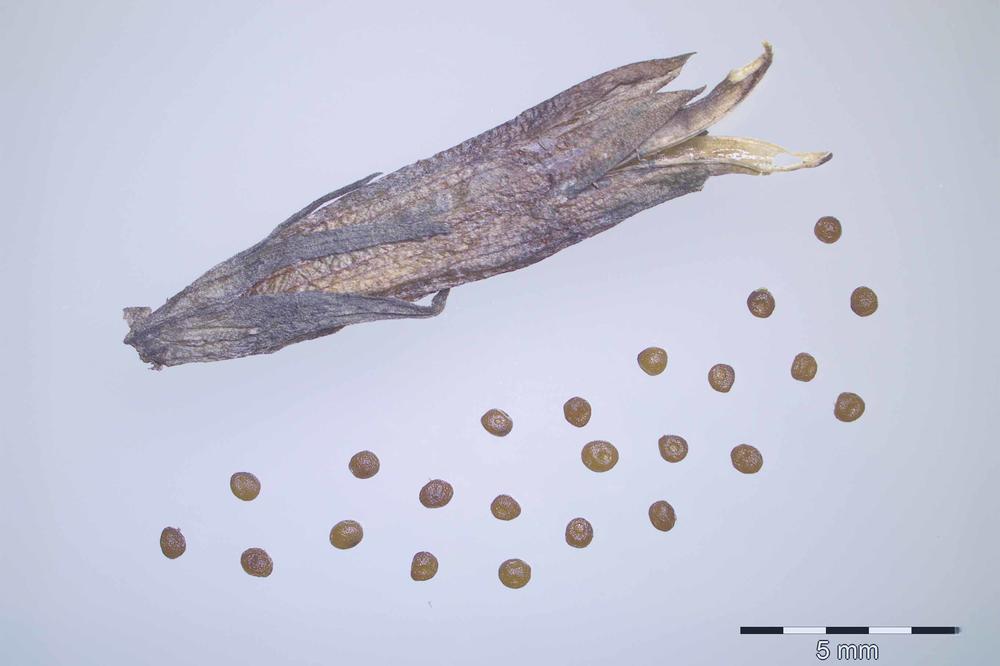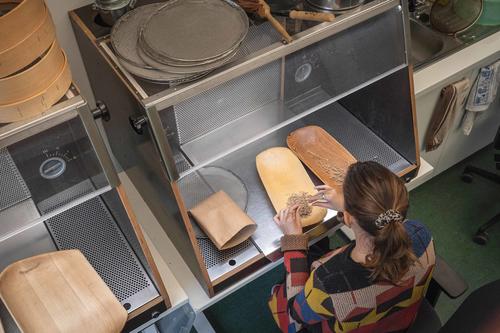Sowing the Seeds of Success for Thirty Years
Dahlem is home to the biggest and oldest seed bank for wild plants in Germany – 2024 marks its thirtieth anniversary
Dec 18, 2024
These marsh gentian seeds are among the rarest seeds in the Dahlem Seed Bank’s collection.
Image Credit: Marion Cubre/Botanic Garden Berlin
It all started in the fall of 1994 with glass tubes, silica gel, and a freezer – in which 7,260 Brassica balearica seeds were carefully stored. The premises that would eventually grow to become the Dahlem Seed Bank were initially located in a former carpentry workshop in the Botanic Garden’s service yard. However, the collection quickly outgrew its original freezer and a more spacious, specialized building needed to be constructed. This was officially unveiled in 2015 as the Dahlem Seed Bank. Now in its thirtieth year of operation, the Dahlem Seed Bank is a fully equipped modern facility capable of reliably storing seeds for the long term.
Many of the specimens stored in the Dahlem Seed Bank are offered on the “Index Seminum” – a catalog that botanic gardens regularly update with information on the seeds they have available for research, teaching, public information, and nature conservation purposes. Botanic Garden Berlin employees maintain the Index Seminum to this day. The catalog is updated every year, and the seeds are exchanged all over the world.
Preserving Seeds for Posterity
The new building has all the technical facilities required to dry seeds and store them for an indeterminate period of time. This includes two drying chambers at a relative humidity of 15% and an air temperature of 15°C, refrigeration units, and a walk-in freezer for long-term seed storage at -24°C. These conditions mean that seeds can still germinate after being in storage for many years.
The seed bank also contains a fully equipped seed lab, enabling all the work necessary for germinating seeds to be carried out on site. The first step in preserving seeds is to carefully clean them by hand with sieves of various screen sizes to remove any fruit remains or contaminants before transferring them into airtight glass tubes together with a desiccant. Today, the Dahlem Seed Bank is home to over 11,000 accessions and millions of seeds. These have been collected from approximately 3,500 species of plants from eighty-two different countries. Once stored, these seeds are freely available for research, teaching, public information, and nature conservation purposes worldwide.
Promoting Biodiversity in Berlin
“Only a few seed banks around the world focus on preserving the seeds of wild plants,” says Thomas Borsch, director of the Botanic Garden Berlin and professor for systematic botany and geography of plants at Freie Universität. “However, this is important and necessary work – more than 700 species of wild plants are endangered in Berlin alone.”
Following many years of collaboration, the Botanic Garden Berlin officially entered into a cooperation agreement with the Stiftung Naturschutz Berlin, a foundation for nature conservation, in November 2024. The common goal of both groups is to promote biodiversity in Berlin. One way they hope to achieve this is by increasing efforts to collect the seeds of endangered wild plants in Berlin, such as branched Saint-Bernard’s-lily, various types of sedges, or Carthusian pinks, and reintroducing them to shared settlements within the city to fuel public interest in endangered local species.
Taking Precautions for the Future
“The focus of our work is primarily on rare and highly endangered species,” says Elke Zippel, biologist and curator of the Dahlem Seed Bank. “However, we also collect the seeds of plants that are still comparatively common. The changes we are currently observing in the landscape are so drastic that even species that are still widespread are becoming increasingly rare.”
The broad-leaved marsh orchid, which used to be very common in Germany fifty years ago, is one such species. It is found predominantly in damp, nitrogen-poor meadows, but its numbers are dwindling as a result of over-fertilization and artificial drainage. The last remaining native specimens of these orchid in the Brandenburg region are being genetically researched at the Botanic Garden Berlin as part of a doctoral project. Their seeds – some of the smallest in the Dahlem Seed Bank’s collection – will hopefully be able to supplement research, teaching, and conservation efforts for many years to come.
This article originally appeared in German in the Tagesspiegel newspaper supplement published by Freie Universität Berlin.


